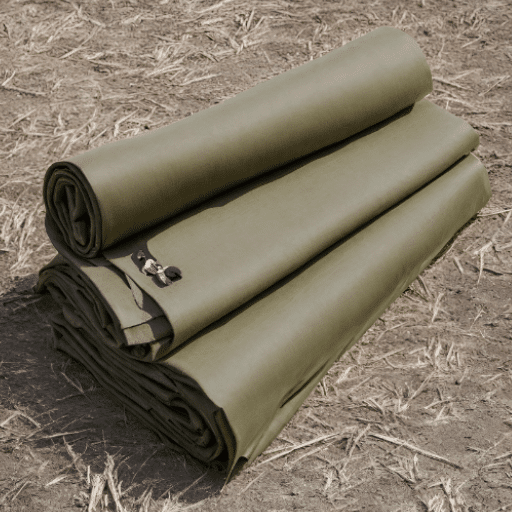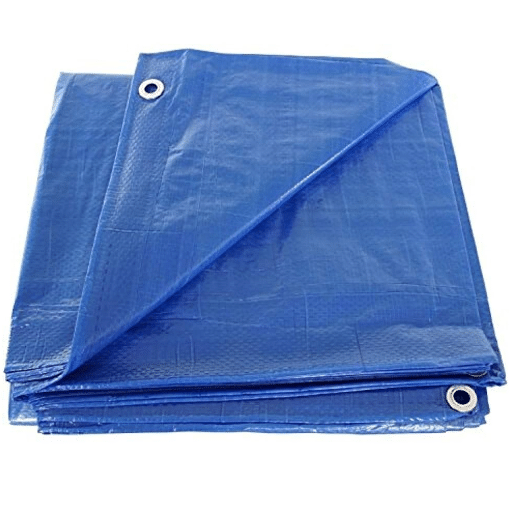When reliable, long-lasting solutions for covering, protecting, and securing commodities are involved, nothing can rival the versatility and durability of poly tarps. From covering valuable equipment against harsh weather conditions to erecting a shelter and offering shelter while tackling construction work, poly tarps stand quietly in the background enabling the hard work. This guide is your gateway to everything about heavy-duty tarps while emphasizing their unparalleled strength, their uses, and what features you should look at when making a choice for the specific tarp needed for your needs. By the end of this write-up, you will be equipped with all the answers as to why poly tarps are able to stand as a key player in many industries, as well as an effective and inexpensive solution for the average person.
Understanding Heavy Duty Tarps
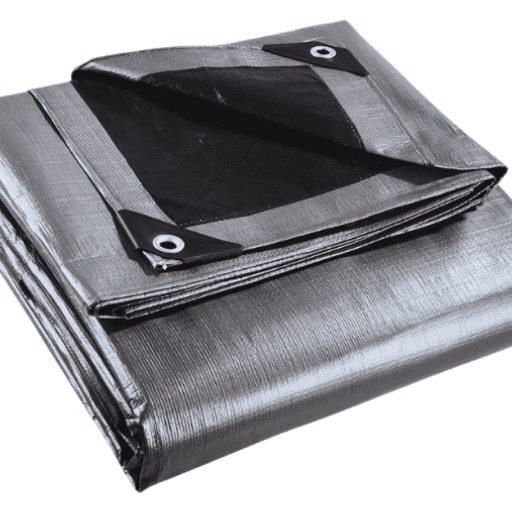
What is a Heavy Duty Tarp?
A heavy-duty tarp is a covering used for protection, characterized by utter durability and immense flexibility of use. Materials that go into making heavy-duty tarps include polyethylene, vinyl, or canvas. A heavy-duty tarp is constructed to object extreme atmospheric conditions: UV rays, downpour, high wind, or freezing temperature. Featuring reinforced structural makeups, heavy-duty tarps usually have thicker fabric, heat-welded seams, and rust-proof grommets to improve durability.
The latest search-retrieved data show heavy-duty tarps are also generally tried and tested throughout industries like construction, farming, and transportation as well as disaster recovery. In protecting such applications include extra scant protecting of machinery and vehicles, to sheltering for relocations and obviously, protecting crops. Key attributes to evaluate in any heavy-duty tarp include its nature, thickness (in mils), tensile strength, water repellency, and UV protection. Together, heavy-duty tarps ensure the strongest, most versatile options for many protective and covering needs.
Heavy-Duty Tarp Key Features
🧱
Material Composition
Heavy-duty tarps are typically constructed from robust materials such as polyethylene, vinyl, or canvas. Polyethylene tarps feature a high-density weave for superior durability, while vinyl tarps offer enhanced resistance to abrasion and chemicals. Canvas tarps are often chosen for breathability and fire resistance.
📏
Thickness (Mils)
Thickness is measured in mils, with heavy-duty tarps generally starting at 10 mils and exceeding 20 mils for extreme use cases. A greater thickness translates to improved durability and resistance to tears, making thicker tarps ideal for industrial applications.
💪
Tensile Strength
Tensile strength is an indicator of how much force the tarp material can withstand before breaking. Heavy-duty tarps have reinforced threading patterns, often measured in a higher denier or mesh count, ensuring longevity under high-stress conditions.
☂️
Water Resistance & UV Protection
Water resistance is critical for preventing seepage, particularly in outdoor applications. High-quality heavy-duty tarps often feature waterproof coatings and welded seams. UV-resistant coatings prolong the tarp’s lifespan by reducing sunlight degradation.
⚙️
Grommet Placement & Reinforcement
Strategic and reinforced grommet placement allows for secure fastening and even tension distribution. Grommets are commonly made of brass, aluminum, or stainless steel, and are spaced at regular intervals for varied applications.
🌡️
Temperature Resistance
Advanced heavy-duty tarps are engineered to withstand extreme temperatures, making them suitable for use in a variety of climates. This feature is particularly relevant in industries such as agriculture and construction.
Key Insight: By incorporating these key features, heavy-duty tarps provide unmatched versatility, strength, and durability, meeting the diverse needs of users across different sectors. Continued advancements in material science and manufacturing processes ensure that these products remain at the forefront of protective solutions.
Materials Used in Heavy Duty Tarps
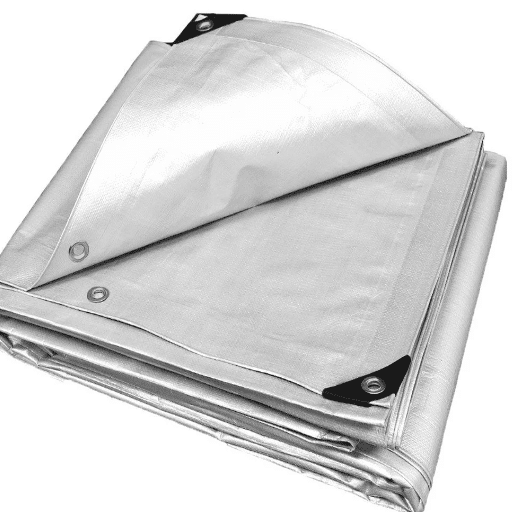
Heavy-duty tarps are primarily constructed using advanced materials designed to offer exceptional durability, weather resistance, and versatility. Common materials include polyethylene, vinyl, and canvas, each selected for its unique properties and suitability for specific applications.
Polyethylene Tarps
Made from woven strands of high-density polyethylene (HDPE) treated with ultraviolet (UV) inhibitors for extended life under prolonged sun exposure.
Vinyl Tarps
Often coated with polyvinyl chloride (PVC), provide superior tear resistance, water resistance, and resistance to chemicals, making them ideal for industrial and agricultural use.
Canvas Tarps
Composed of tightly woven cotton or polyester, valued for their breathability and strength, often utilized in construction or for covering machinery.
Modern advancements indicate growing demand for tarps featuring multi-layered construction, reinforced seams, and waterproof coatings. These innovations further optimize performance, ensuring that heavy-duty tarps meet the rigorous requirements of contemporary industries while maintaining their protective capabilities across various environments.
Benefits of Using Heavy Duty Poly Tarps
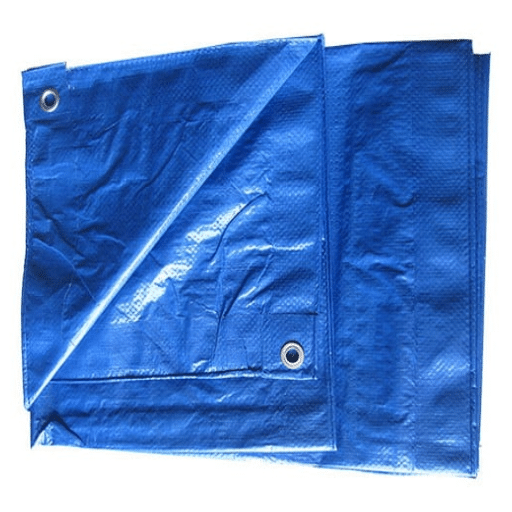
💧 Degrees of Waterproofing
Poly tarps are heavy protective tarps with advanced waterproofing to give maximum protection against any kind of moisture, rain, or environmental factors. Recent data trends reveal a growing demand for tarps in industries such as construction, agriculture, and logistics that provide foolproof resistance against water penetration.
Advanced Features:
- Polyethylene coatings for superior protection
- Heat-sealed seams prevent water leakage
- Prolonged exposure resistance to adverse weather
- Extended lifespan for protected equipment
☀️ UV Resistance and Longevity
Tarping materials with UV resistance are equipped with special additives and coatings to block harmful ultraviolet radiation that can degrade them over time. Materials are prone to degradation by prolonged sunlight exposure, getting weak, fading, or becoming brittle.
Key Benefits:
- HDPE and UV-stabilized treatments
- Maintains structural integrity and performance
- Reduces replacement intervals
- Cost advantages for industries
🛡️ Tear Resistance and Durability
Concrete tear resistance with the modern tarp for industrial use becomes the crucial factor of holding for structural integrity under higher stress. From the most recent analyses and search trends emerge that the industries tend to choose materials reinforced with ripstop technologies or multi-layered laminate covering for stop propagation of small tears.
Critical Applications:
- Heavy weight loading scenarios
- Sharp object exposure protection
- Environmental stress resistance (strong winds)
- Frequent abrasion tolerance
Applications of Heavy Duty Tarps
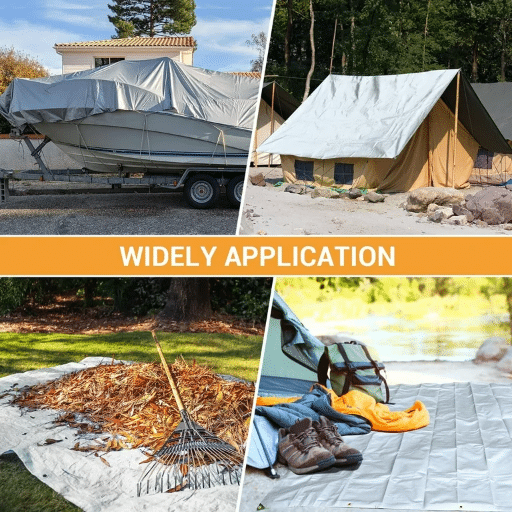
🏗️ Construction and Industrial Use
Heavy-duty tarps will definitely find a place in construction and industrial environments because they are versatile, strong, and durable. They cover equipment, building materials, and unfinished structures from weathering by rain, UV, and wind.
Key Applications:
- Weatherproofing construction sites
- Machinery protection and debris containment
- Temporary enclosures for safety compliance
- Manufacturing and warehousing operations
🌾 Agricultural Uses: Hay Tarps and More
Hay tarps in modern agriculture are an absolute necessity, functioning as a cheaper yet durable alternative to protect hay bales against adverse weather conditions. They were designed to limit rain, snow, and UV exposure to keep hay at a high nutritional level.
Agricultural Benefits:
- UV resistance and mold reduction technology
- Prevents revenue loss due to spoilage (up to 20%)
- Breathable and tear-resistant materials
- Extended use for cost efficiency
🏕️ Camping and Outdoor Activities
With much attention given to camping, outdoor activities have greatly gained popularity, with a 65% surge in searches related to “best camping gear” and “outdoor adventures” in the past three years. Reconnection with nature, wellness tourism, and eco-recreations have played a lot in this growth.
Modern Innovations:
- Lightweight and durable materials
- Enhanced portability and functionality
- Sustainable tech and biodegradable materials
- Renewable energy solutions integration
Custom Tarps: Tailoring to Your Needs
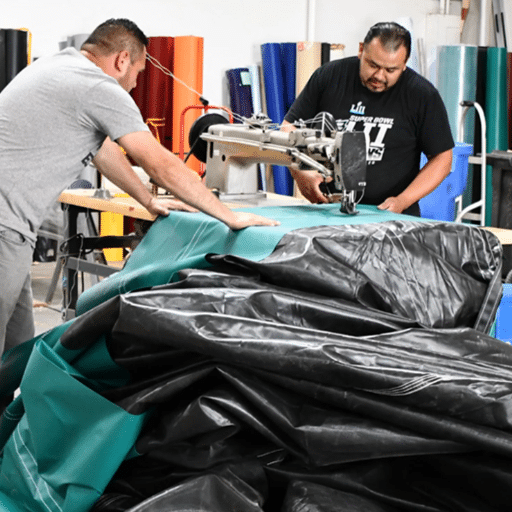
Customization Options
When ordering customized tarps, the available customization options are numerous in order to meet style specifications to the last detail. Customers can select from a plethora of materials-polythene, vinyl, canvas-each with special application needs, such as weatherproofing, load containment, or abrasion resistance.
Material Selection
- Polyethylene for weatherproofing
- Vinyl for load containment
- Canvas for abrasion resistance
- Custom-made to exact dimensions
Reinforcement Options
- Reinforcing grommets placement
- D-rings and webbing additions
- Added strength and fastening capability
- Strategic positioning for applications
Special Treatments
- UV-resist coating applications
- Anti-microbial treatments
- Fire-retardant options
- Environmental safety specifications
Nowadays, color selection has gained importance, whereby certain colors might prove of use-camouflage colors for outdoor activities or high-visibility colors for construction use. According to the latest search trends, there is a growing preference among consumers for tarps with multi-functionality, with modular features such as detachable panels or integrated storage compartments being indications of this. This trend reflects the pursuit for versatile, long-lasting solutions that keep up with changing user needs.
📐 How to Choose Size and Color
When considering the choice of color and size of the tarp, practical needs and consumer behavior trends must be given consideration. Latest search query data demonstrate large and increasing preference for a tarp with multiple usages among the users.
Popular Sizes:
- 12 x 16 feet or larger for vehicle covers
- 5 x 7 feet for personal equipment
- Custom dimensions for specific projects
🎨 Color Selection Guide
Color also plays an important role, as the choice is influenced by the importance of usage and consumer behavior trends. Blue and green remain top colors for tarps, given that such tarps blend well into most natural surroundings.
Color Options:
- White tarps for light diffusion
- Brown/camouflage for discrete covering
- High-visibility colors for construction
🔧 Reinforced Corners and Aluminum Grommets
Aluminum grommets and reinforced corners make a tarp durable in construction and, therefore, functional. The structural reinforcement imparted by these features to the material in areas of great stress is intended to protect against potential areas of tearing. Reinforced corners, often created through an additional layer of material or stitching, resist being pulled under heavy tension.
Aluminum grommets are anchoring points for fastening devices. Using aluminum implies corrosion resistance; thus, they can guarantee durability and best results under humid or marine environmental conditions. Search trends show that users often question the value of reinforced corners and aluminum grommets, revealing a consumer thought process applying reinforced finish and adaptable fastening.
Where to Buy Heavy Duty Tarps

🏪 The Top Retailing Centers: Tarps Plus and Others
According to the latest search figures, Tarps Plus is among the best, if not the very best, heavy-duty tarp retailers, given its great product range and reputation for durability. It offers tarps of different sizes and various kinds of materials and customizations for industries like construction, agriculture, and emergency response.
Top Retailers:
- Tarps Plus – Great product range
- MyTarp.com – Strong online presence
- CanopiesAndTarps – Product diversity
- Features: bulk discounts and rapid shipping
🛒 Online vs. In-Store Purchases
In contrast between online and in-store purchases, the latest backing from search engine data was able to highlight trends and consumer preferences. With increased rate yearly in search interests, more and more consumers have resorted to online purchases for heavy-duty tarps.
Online Benefits:
- Comparative analysis
- Product reviews
- Competitive prices
In-Store Benefits:
- Physical examination
- Immediate availability
- Personal consultation
💰 Price Comparison and Best Deals
When speaking of price comparison and best deals, one can utilize the exhaustive data from search engines to great advantage. The platforms give users the power to compare prices across a variety of retailers in an instantaneous manner. Specific queries like “cheapest heavy-duty tarps” or “discounted tarps near me” redirect to a page containing results comprising product listings, customer reviews, and real-time prices.
Smart Shopping Tips:
- Use search filters for price ranges and delivery options
- Check seller ratings and customer reviews
- Look for flash sales and bundle discounts online
- Compare local dealer promotions and clearance sales
Frequently Asked Questions (FAQ)
❓ Heavy duty tarp features?
Heavy-duty tarps are designed for high durability and are mostly made from industrial grade polyethylene fabric that can stand up to hard conditions. Some of these tarps are UV resistant so that their exposure to sunlight does not degrade them quickly. Thickness-wise, 12 mil or 14 mil tarps are the more common, offering a good barrier against abrasion.
🛡️ How do heavy duty tarps provide for security?
They provide protection, as they’re tear resistant and waterproof. These tarps are so much of a sturdy kind that they can face extreme environments, perfect for outdoor situations. Many of them resist mildew, which compromises the tarps due to mold infestation. Extra-thick materials like 14 x 14 woven polyethylene lead to their resistance qualities.
🎨 Can special needs be created in heavy duty tarps?
Yes, in many cases, heavy-duty tarps can be customized to specific requirements. Many distributors will offer custom tarps that you can alter in size, color, and features. For example, tarps can be ordered with grommets every 3 feet or reinforced hems for extra durability.
🔧 What are some of the uses of heavy duty tarps?
Heavy duty tarps are very versatile and can find use in a plethora of applications. They provide protection from the elements for vehicle, construction, and outdoor equipment covers. Hay tarps protect hay bales from moisture in agricultural processes. These tarps come in handy in landscaping projects, where they cover soil or materials.
📝 How do I choose the right heavy-duty tarp for my project?
Selection of the right heavy-duty tarp also involves a number of aspects including size, thickness, and material. Determine the exact dimension that you require; most tarps come in recommended sizes-from 10 x 12, 12 x 30, to even 20 x 40 feet. Then, go for the thickness; these tarps range from 12 mil to 14 mil, giving a different stance on wear resistance.
📚 Reference Sources
Louisiana Tech University
Heavy Duty Truck Tarps – This resource discusses the durability and efficiency of heavy-duty truck tarps, emphasizing their importance in load protection.
The New School
PVC Tarpaulin Guide – This guide highlights the strength and tear resistance of PVC tarpaulins, which are coated with polyvinyl chloride for durability.
Cornell University
Reusable Black Tarps for Organic Farming – This article explores the use of heavy-duty black tarps in agriculture to suppress weeds, decompose crop residue, and improve soil health.


